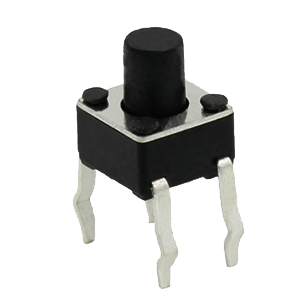Generally speaking, common membrane switches are mainly composed of 6 layers of materials, which are panel, surface glue, upper circuit, isolation layer, lower circuit, and bottom glue in the order from the surface to the inside. The structure of each layer is described below:
(1) Panel: The panel is the "coat" of the entire membrane switch. On the basis of properly arranging the keys, it plays a necessary decorative role on the entire membrane switch through different colors, patterns and key shapes. The main function of the panel layer is to play the role of marking and keying, so the selected materials must have the characteristics of high transparency, high ink adhesion, high elasticity, and anti-folding properties.
(2) Upper circuit and lower circuit: The upper and lower circuits are the electrical components of the membrane switch, and are also the "off" and "key" of the switch, and their performance directly affects the performance of the switch electrical appliances, mainly It is formed by printing a layer of conductive material on the film. The upper and lower circuits play the two roles of electric shock necessary for the switch to close. The thickness is generally within 0.05--0.175MM, and the most common one is 0.125MM PET.
(3) Surface adhesive, isolation layer, and primer: the materials of these three-layer structures are all double-sided adhesives, which have different names due to their different positions in the switch structure. The three layers of double-sided tape have different thicknesses depending on their respective layers. This is mainly determined by the thickness of the switch and the operating force of the keys.

How Membrane Switches Work
Membrane switch is an operating system that integrates key functions, indicating elements and instrument panels. It consists of four parts: panel, upper circuit, isolation layer and lower circuit. When the membrane switch is pressed, the contacts of the upper circuit are deformed downward, and are in contact with the pole plate of the lower circuit. After the finger is released, the contacts of the upper circuit bounce back, the circuit is disconnected, and the circuit triggers a signal. The membrane switch has strict structure, beautiful appearance and good sealing performance. It has the characteristics of moisture resistance and long service life. Widely used in electronic communication, electronic measuring instruments, industrial control, medical equipment, automobile industry, smart toys, household appliances and other fields.
The basic working principle of the membrane switch is as follows: when the panel is not pressed, the membrane switch is in a normal state, its upper and lower contacts are disconnected, and the isolation layer isolates the upper and lower circuits; when the panel is pressed, the upper and lower contacts are in a disconnected state. The contacts of the circuit are deformed downward, overlap with the lower circuit and make the circuit conduct, and the circuit after the conduction sends a signal to the external connecting instrument (substrate) to realize its corresponding function; when the finger is released, the upper circuit contacts. The point bounces back, the circuit breaks, and the loop triggers a signal.
Membrane Switch Lifetime
The life of the membrane switch can generally reach more than 1 million times. The action of the switch is only realized by the vertical direction of the elastic film. Although the elastic film has undergone a million times of creep, the amplitude of the creep is very small. Only 0.1-0.3MM, coupled with the rationality of material selection, so the membrane material can withstand a long life of more than one million times without deformation, which determines the durability of the membrane switch.
Its sealing requirements are strict, but after the production is completed, the switch contacts are not eroded by harmful gases, not easy to be oxidized, waterproof, dustproof and oilproof, suitable for various harsh environments. Membrane switches are designed to be arranged to form a membrane keyboard, with a high density and a sealed sheet structure composed of multiple layers of membranes. The connection lines and lead-out lines between all switches are completed by screen printing at one time. The total thickness is 1-3MM. Greatly reduced size. Lightweight and reliable quality. Compared with the traditional mechanical switch, its installation is convenient and simple. Just stick it lightly, peel off the backing tape, then fix the surface of the whole machine, insert the lead outlet into the socket of the rear circuit of the whole machine, and the circuit can be connected in an instant to complete the use of the whole product. In the design of the shape, according to the user's design concept, the color pattern can reflect the individuality, and the decorative effect can reflect the beauty of the material and the production process.


